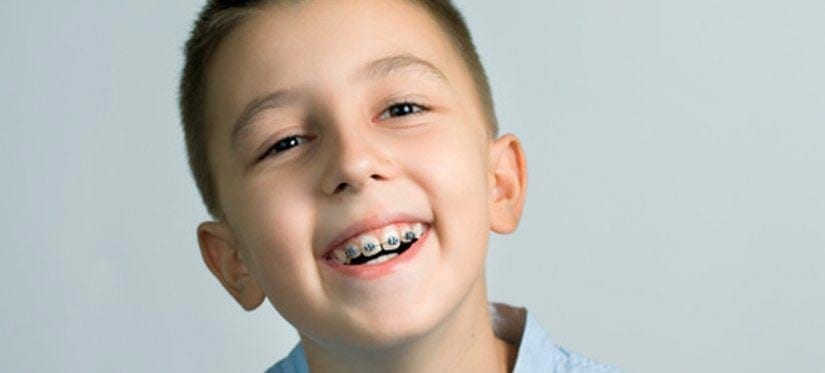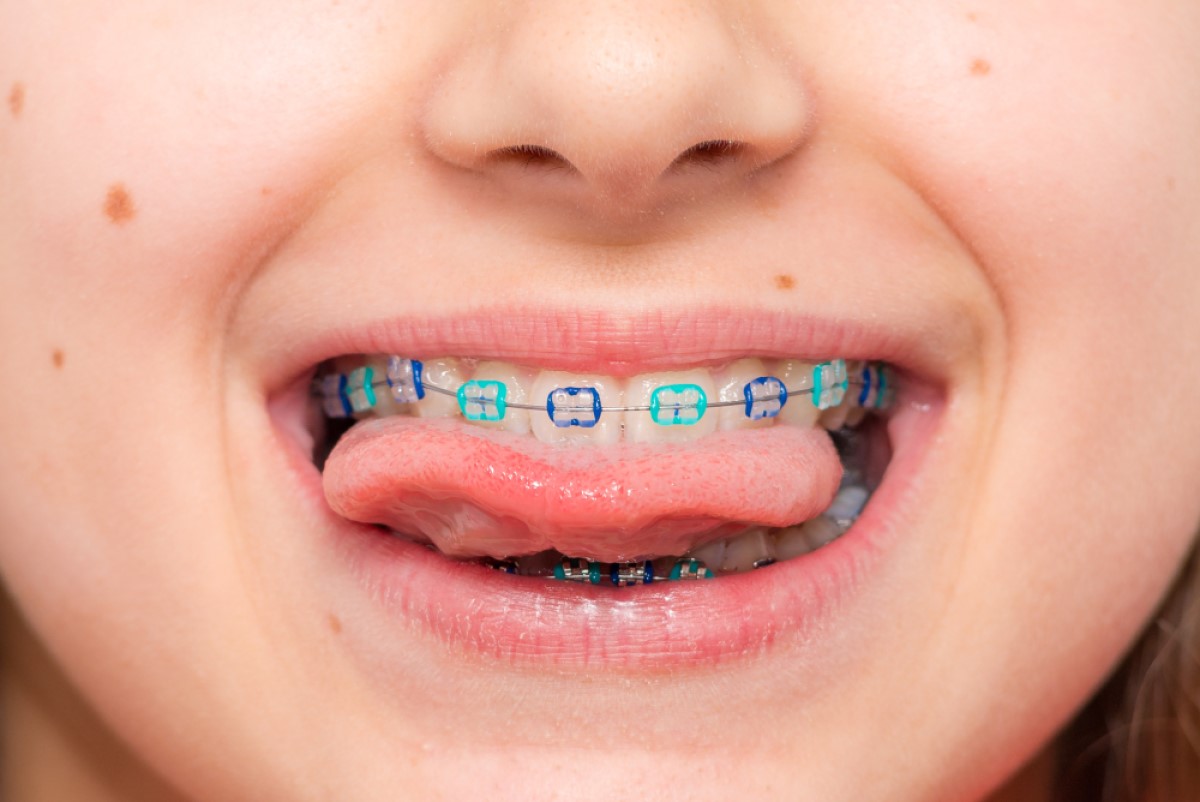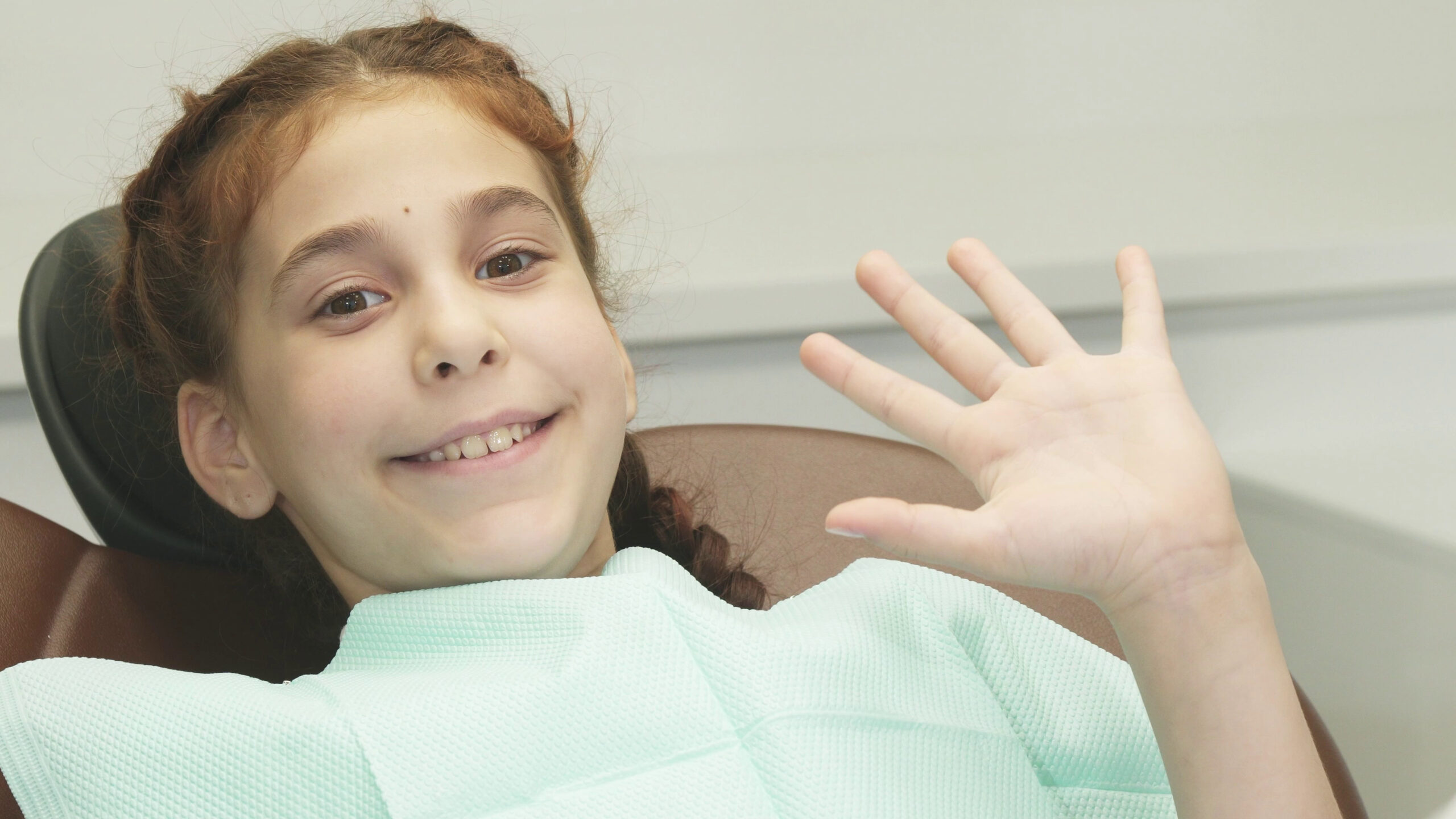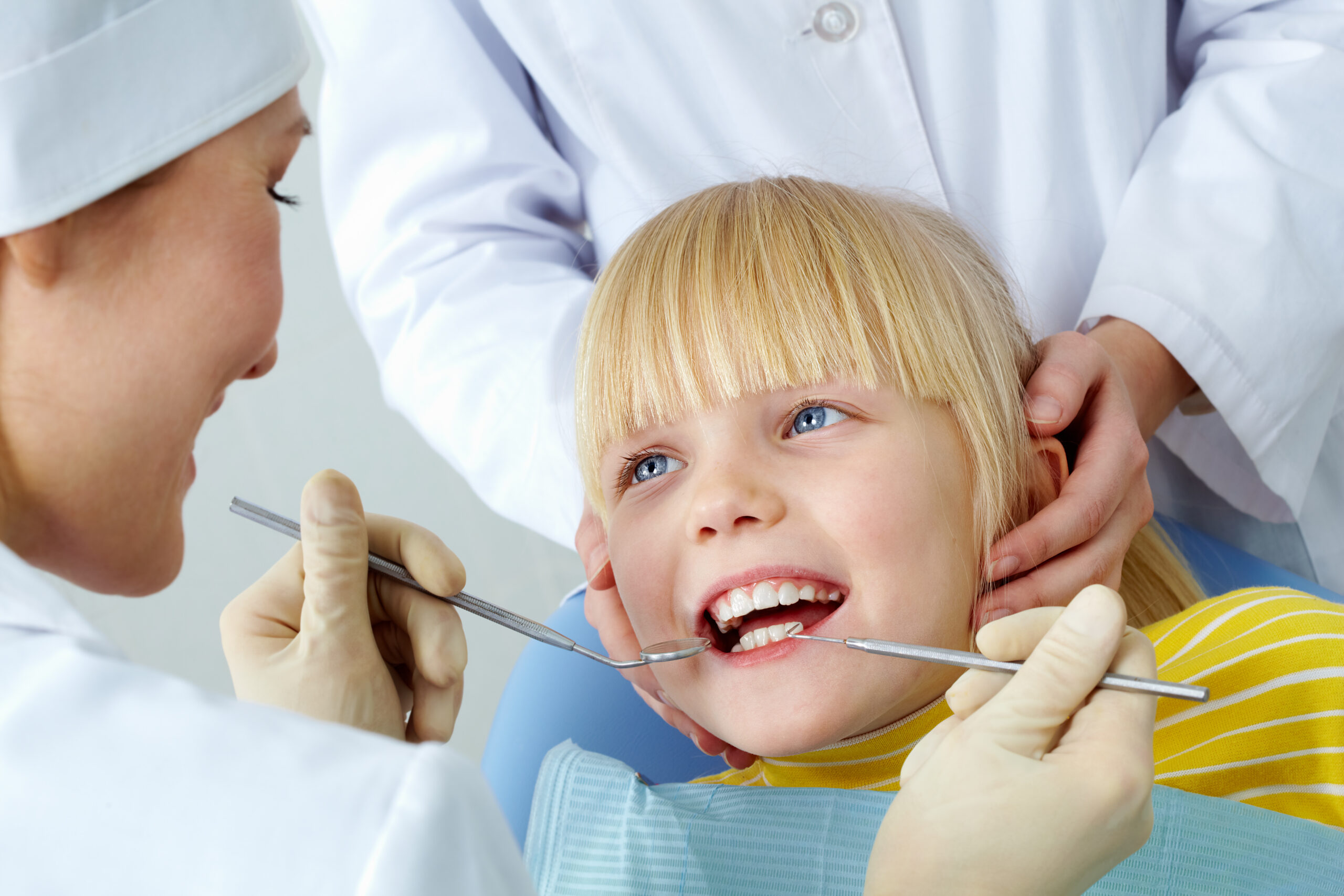
Ultimate Guide to Braces for Kids
March 10, 2020 ABC Children's Dentistry
These days, many children get braces. Kids today are sometimes excited to get braces. In their eyes, braces are a rite of passage that signals they’ll soon be teenagers and that’s exciting. As a parent, you probably have a lot of questions about braces for kids.
In this article, we will answer your questions about braces, including how to know if your child really needs them and how to afford them.
Does My Child Need Braces?
Braces are a more common treatment option today than 30 years ago. This is due, in part, to braces becoming more socially-accepted. However, other factors like sugary diets and lack of fluoride also contribute to the growing demand for braces.

If you think your child might need braces, make an appointment with your dentist to discuss your concerns. It’s important to know that children need braces for lots of different reasons, including overcrowding, overbites, and underbites. Here are some reasons your child might need to see an orthodontist:
- Early loss of primary teeth
- Difficulty biting or chewing food
- Mouth breathing
- Thumb-sucking
- Overcrowded teeth
- Jaws that shift, protrude, or recede
- Teeth that do not meet or meet abnormally
- Disproportionate jaw
If your child needs braces, your dentist will recommend that you see an orthodontist. An orthodontist is a dentist who specializes in correcting these types of alignment problems. The orthodontist will ultimately determine whether your child needs braces or a different treatment.
It’s important to remember that, although braces are most common among preteens and teenagers, there is no set age for a child’s first visit to the orthodontist. In fact, some doctors recommend that a child’s first visit to the orthodontist happen around age seven. At this age, issues such as overcrowding and malocclusion can be easily seen by an orthodontist. Beginning check-ups with an orthodontist at an early age gives you plenty of time to monitor issues as they develop and start treatment early if needed.
What’s the Right Age for Braces?
There is no fixed age for acquiring braces. Orthodontists decide on a case by case basis when it is best to begin treatment. Usually, children between the ages of nine and 14 can get braces, because the child will have some permanent teeth at this point.
Although pediatric dentists and orthodontists recommend children to be screened by an orthodontist as early as age seven, braces are not generally fitted until a child is at least 12, has 12-year molars, and has lost all their primary teeth.
If your orthodontist identifies an issue that would benefit from braces during the screening exam, they can prevent the problem from escalating with interceptive action (e.g. a palatal expander). This tool can ensure that permanent teeth emerge in the right position.
Now you know that it’s important to visit the orthodontist early in order to address any concerns early and avoid more serious issues, but what can you expect from the first appointment? Keep reading to find out.
What Happens When We Visit an Orthodontist?
During the first exam, your child’s orthodontist examines your child’s teeth and jaw carefully. The orthodontist may ask your child to bite together and ask questions about whether your child has difficulty chewing and/or swallowing.
The orthodontist will probably take X-rays of the mouth and teeth to observe tooth position and learn whether any permanent teeth have yet to emerge. They may also make an impression of your child’s teeth. The impression helps the orthodontist determine which treatment options are best for your child.
What Are Our Options?
If you’ve just learned that your child needs braces, you’re probably wondering about your options. After all, braces are a lot different these days! There are so many options that it can be difficult to decide at first. Here are a few options for braces:
- Traditional metal braces: The most common option, this type of braces has steel ties that hold the brackets in place. Many kids like to choose color bands for this style of braces, which gives them some freedom to personalize their braces.
- Damon braces: These braces are held together by the brackets themselves and do not use steel ties at all to hold wires in place.
- Invisalign: One of many clear removable aligners, these fit over the teeth discreetly and resemble a mouthguard.
Once your child has braces, it’s important to properly care for them. Repair and replacement can increase the overall cost of treatment. You also want to be sure your child avoids tooth decay while wearing braces; carefully monitor dental hygiene routines and be sure to keep up with regular professional cleanings.
How Do We Take Care of Braces?
Your orthodontist will provide detailed instructions on how to care for your child’s braces and teeth while they have braces.
If your child has braces with wires, be aware that food can easily get stuck in the tight spaces between wires and teeth. That means children with these braces need to be diligent about keeping their teeth clean by brushing well after meals and flossing daily. You may want to consider getting a special floss if your child has braces.
Kids with braces need to avoid sticky or gummy foods such as gum, popcorn, and sugary soda or juice. These foods can damage braces and cause tooth decay.
If your child has a plastic aligner like Invisalign, it is important to remove the aligner before eating and brush the aligner to keep it clean.
Don’t forget to schedule regular dental exams and professional teeth cleaning with the child’s dentist. If you notice a loose wire, bracket, or a protruding wire, call the orthodontist for an appointment right away. That way, they can find the problem and repair it before it causes your child any discomfort.
How Much Do Braces Cost?
Many factors influence the cost of braces for your child:
- Your location: The cost of orthodontic care is more expensive in urban areas as opposed to rural places. Therefore, if you live in the city or receive care from an orthodontist based in an urban area, you can expect to pay more for your child’s braces.
- Your dental insurance: Many dental insurance plans consider braces to be a cosmetic procedure. For this reason, it can be difficult to find an insurance carrier that will help cover the cost of braces. If you do get coverage for orthodontia, it is often limited to the most economical types of braces.
- The type of braces: Not all orthodontists have experience with each kind of braces and, depending on your child’s alignment needs, the types available to you may be limited. Here are the different types of braces available:
- Metal braces: The most common type of braces are available everywhere, cost less than other types of braces, and work quickly. However, they are visible due to the metal brackets and wires.
- Ceramic braces: Much the same as metal braces, but considered less visible by some. This type uses ceramic brackets to blend in with teeth. However, they are more difficult to care for than metal braces and can stain if not cared for properly.
- Lingual braces: This type of braces is installed behind the teeth, which hides them from view. They are also more costly than metal or ceramic braces.
- Invisalign: This is the only type of braces that do not use a bracket system. Instead, this type uses clear plastic molds that get swapped out for slightly straighter versions throughout treatment. This way, teeth are slowly aligned in a comfortable way. This type of braces does not usually work well for teeth that are badly misaligned. Also, they generally work slower than metal braces, meaning they need to be worn for longer.
- The length of treatment: Most braces are worn for 24 months, but the length of time your child will need to wear braces depends on the severity of misalignment and the type of braces used.
With so many factors to consider, it’s easy to see how prices for braces can vary so much. Metal braces—the most common type—typically cost between $4,000 and $7,000. Most treatment plans include the cost of monthly appointments for care and adjustments. However, if your child damages the braces by not properly cleaning their teeth or eating foods like taffy and popcorn, you may need to pay extra to repair damaged braces.
Can We Afford Braces?
You’re probably wondering how you can afford braces for your child. There are many options for paying for orthodontia. Here are some to consider:
- If you can pay for braces in advance. Many orthodontists offer a discount if you pay for all or part of the treatment plan upfront.
- If you don’t have dental insurance, talk with your orthodontist about a payment plan with low-interest rates to help cover the cost of your child’s braces.
- Consider getting braces at a dental school. At these schools, parents can get braces for their children at a lower cost. Procedures at dental schools may take longer because the orthodontist is being trained and will take directions from a senior orthodontist, who oversees the procedure.
- Special programs like Smiles Change Lives help children from ages 10 to 18 by providing braces for $600. In order to be accepted into the program, you need to apply and demonstrate financial need, as well as show that your child has been receiving regular dental care.
In the end, it’s not just about the cost of the braces. It’s about getting the right treatment for your child when they need it. Talk with your dentist about whether your child needs braces. Your child’s smile is certainly worth it.
Frequently Asked Questions:
What Age Should Kids Get Braces?
The American Academy of Orthodontists recommends children see an orthodontist for the first time around age seven for an evaluation to determine whether braces are needed. While there is no age when a child “should” get braces, people who get braces as children rather than waiting until adulthood get better results in less time.
How Much Does It Cost to Get Braces for a Child?
Braces can cost anywhere from $4,000 to $7,000 depending on the type of braces used and the length of treatment needed, among other factors.
Can You Get Braces for Free?
If your child qualifies for Medicaid or the Children’s Health Insurance Program, the state government may pay for your children to get braces. You will need to research what is required locally.
Are Braces Painful?
Braces do not hurt. Some people feel pressure, but the procedure is not painful.
How Many Years Do Braces Last?
Usually, braces are worn for 18 to 24 months. Sometimes, braces need to be worn longer. Occasionally, braces are needed for shorter periods of time. Talk with your orthodontist about how long your child needs to wear braces.
Will Insurance Cover Braces for My Child?
Many dental insurance plans partially cover braces for children under 18. If your insurance does not cover braces, you can purchase a supplemental plan specifically for orthodontia.
What Is the Cheapest Way to Straighten Teeth?
Retainers are the cheapest method for straightening teeth. However, they only work in cases of mild misalignment. Most people need braces to correct misalignment.
How Long Do Braces Take to Straighten Teeth?
For most patients, braces take between six months and two years to properly straighten teeth. Your child’s orthodontist can tell you how long your child needs to wear braces.
What Can You Eat on the First Day of Braces?
The easiest foods for your child to eat after having braces installed for the first time are things like pudding, yogurt, bread (without seeds), pasta, soft vegetables, and soup or broth.
Can Braces Change Your Jawline?
Yes! Braces improve the jawline by making your face more symmetrical, as they correct any misalignment. Braces restore your natural jaw appearance.
What Are the Side Effects of Braces?
The most common side effects experienced by individuals with braces are:
- Mild discomfort or irritation
- Jaw pain
- Difficulty eating
- Cavities
- Decalcification of teeth
What Is the Minimum Treatment Time for Wearing Braces?
Some people only need to wear braces for six months, but the most common treatment time is 18 to 24 months. Some children need to wear braces for up to 36 months to correct severe misalignment.
Will Braces Change My Child’s Face?
Yes, braces can change your child’s face. The changes that braces make are good changes! Because braces fix alignment issues, the effect is a more symmetrical, natural appearance.





